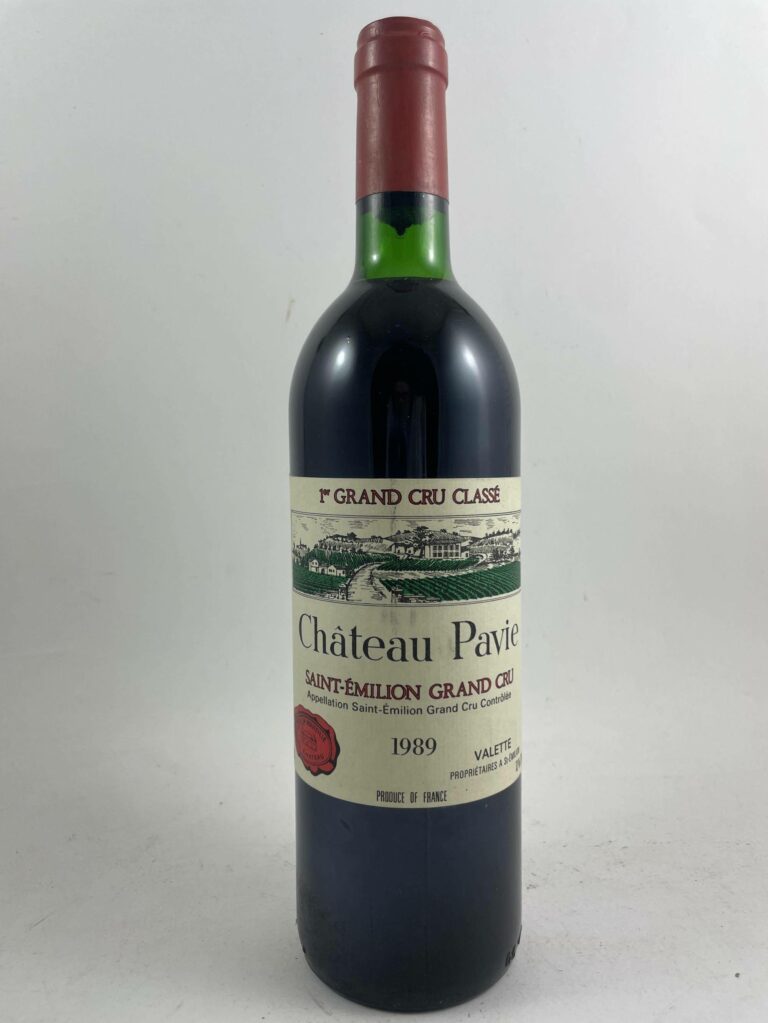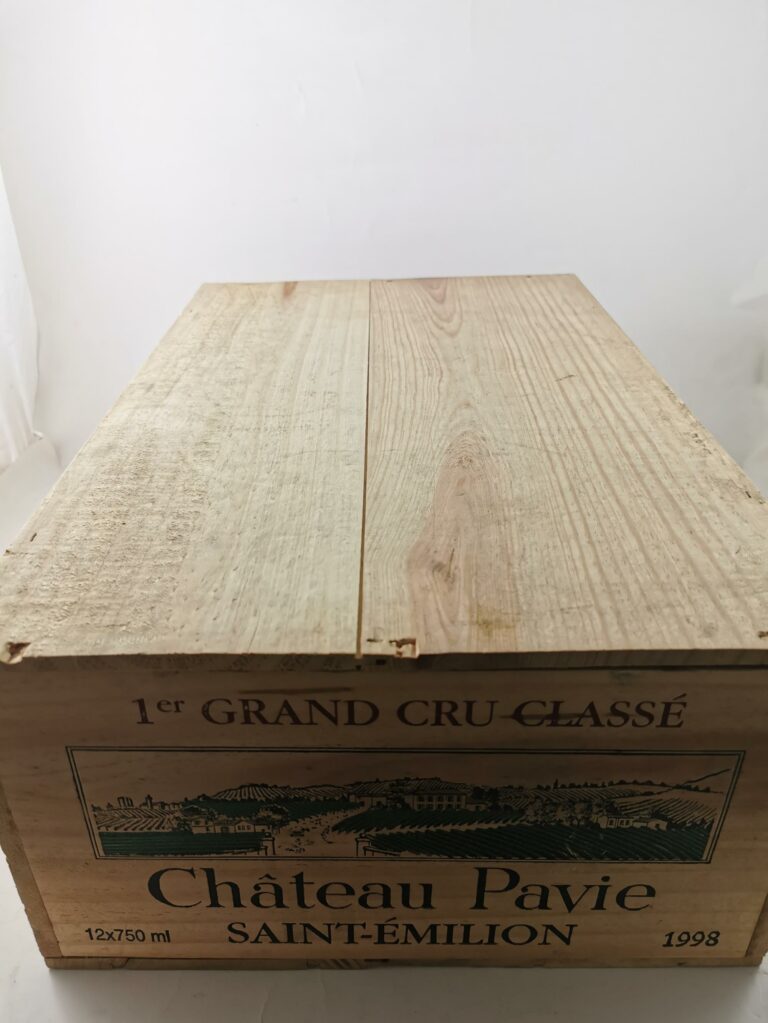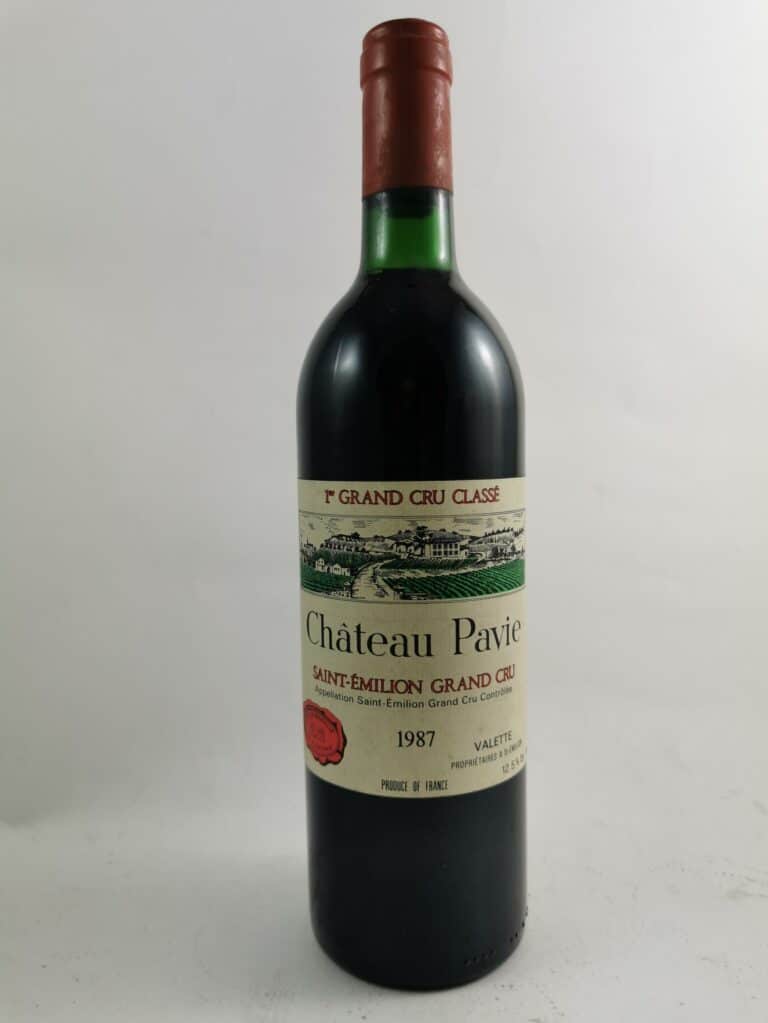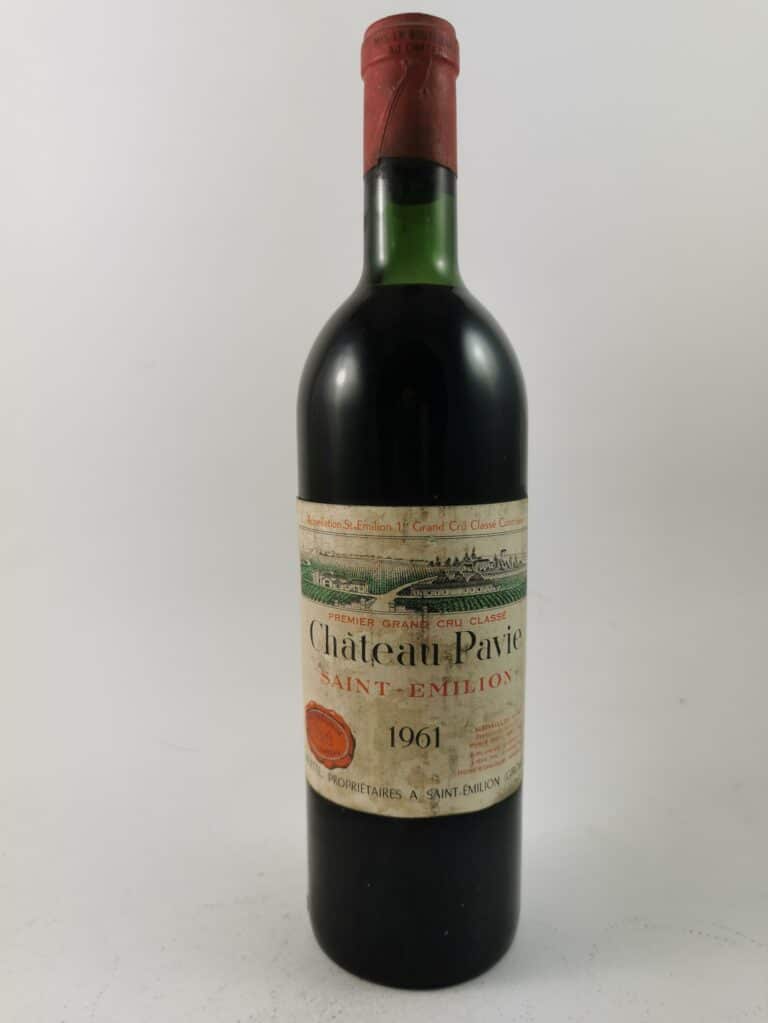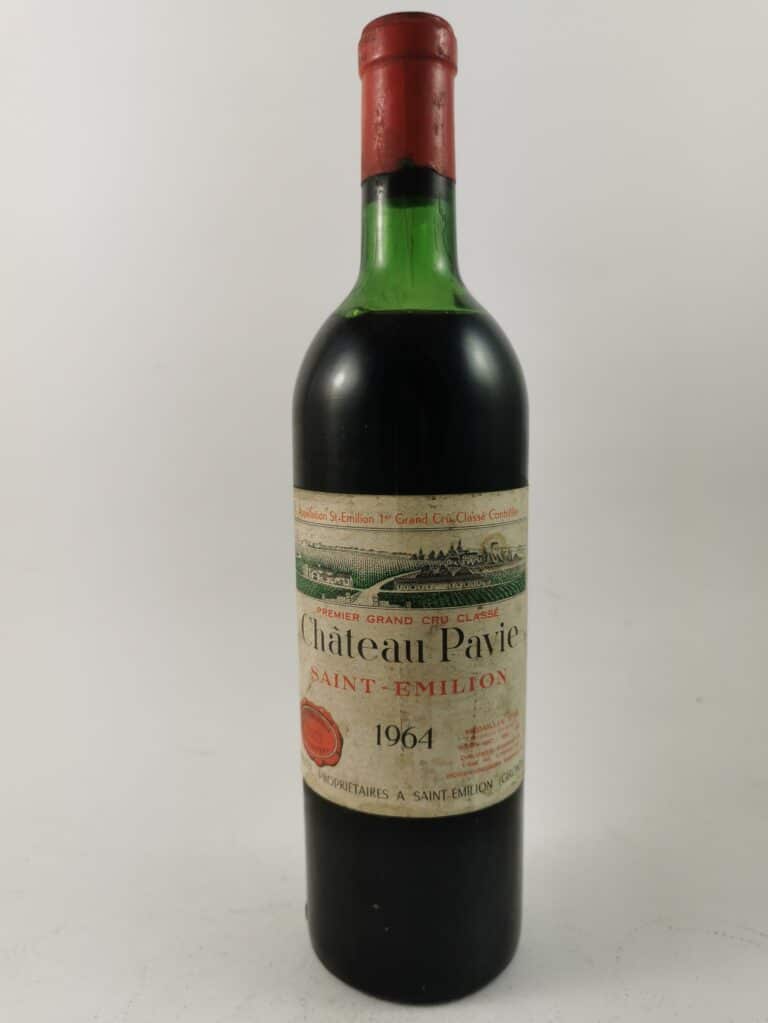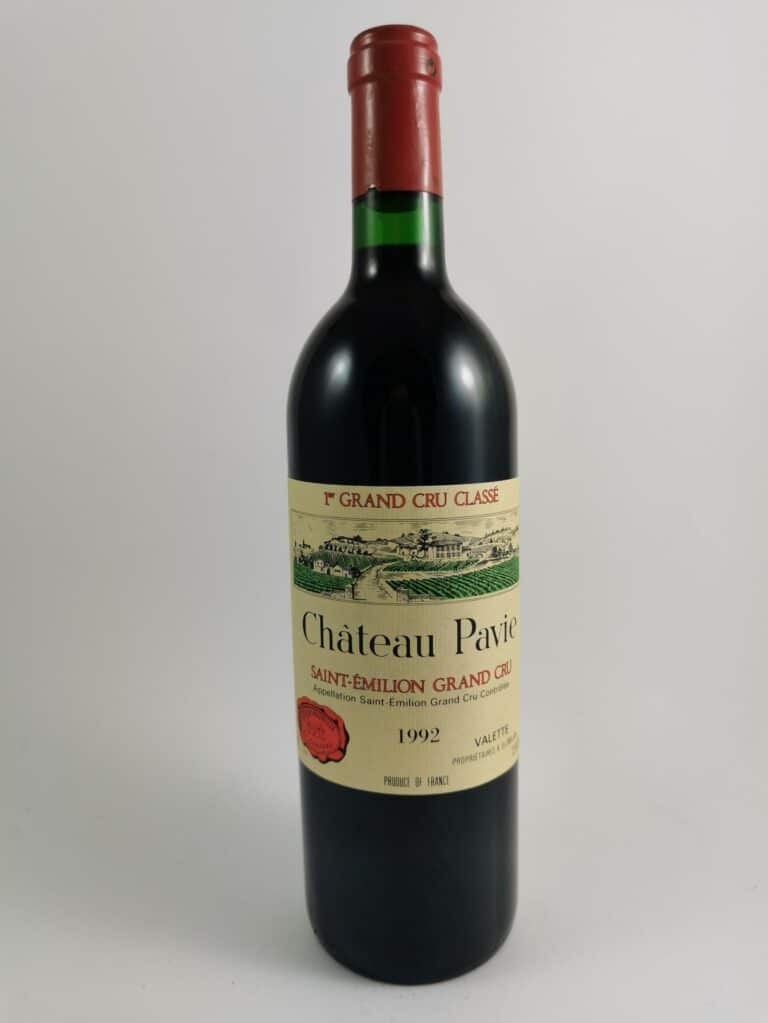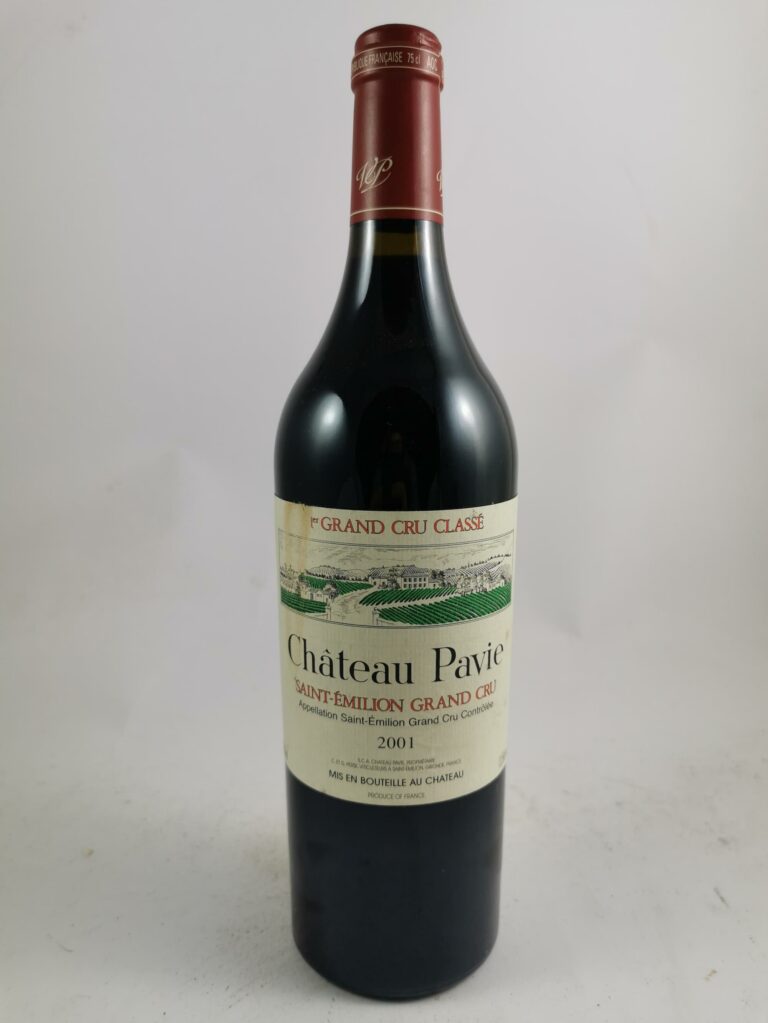Wines of Château Pavie
The history of Château Pavie
In the 4th century, red-fleshed peaches known as “Pavia peaches” grew on this land. Gradually the vines took root and the old Pavie peaches gave their name to the Château.
Until 1867, there are few written records of the estate. It is assumed that the estate belonged to the Sèze family, who also owned Château l’Abbé de Sèze (later Château Troplong Mondot) until 1840, according to the notes of brokers Tastet & Lawton.
In 1867, the Pavie estates owned by Chapus and Pigasse and the Pimpinelle estate owned by Fayard and Chapus won gold medals at the Universal Exhibition. After Pigasse’s death in 1868, his wife took over the management of the estate, which she gradually handed over to other owners.
Bordeaux merchant Ferdinand Bouffard inherits the estate. Over the next twenty years, he set about buying up small neighbouring estates such as Pigasse, Chapus, Fayart and Dussaut, which together totalled 50 hectares. He gave birth to the future Château Pavie, while continuing to vinify and market each estate separately: Larcis-Bagey, Pavie-Pigasse, Pimpinelle, Clos Simard and La Sable (the only estate not to have its own vat room).
In 1887, he sold the Pavis-Chapus parcel to Albert Macquin, who renamed it Château Pavie-Macquin.
Technically, Ferdinand Bouffart considerably improved its properties. The winery will be renovated, the grape varieties improved, and phylloxera will be combated using chemical treatments (potassium carbonate and soda ash).
After Bouffart’s death in 1912, the properties were difficult to manage during the Great War. Albert Porte took over the estate in 1919 and became its owner. He sold Pavie-Pigasse, which later became Pavie-Decesse, and decided to unite the other estates to create Château Pavie. In 1923, Albert Porte had a new, state-of-the-art vat room built.
In 1943, Alexandre Valette, a Parisian merchant from Saint-Ouen who already owned Château Troplong-Mondot, bought Château Pavie.
On June 16, 1955, in the first classification of Saint-Émilion crus, the estate was awarded the rank of 1er Grand Cru Classé B.
When his grandfather died in 1957, Jean-Paul Valette took over the management of Château Pavie. He also took charge of Château Pavie Decesse, which he bought and sold in 1997 to Gérard Perse, then owner of Château Monbousquet.
In February 1998, following family dissensions, Château Pavie was purchased by long-time admirer Gérard Perse. With the help of Michel Rolland, he will breathe new life into the Château. After the buyout, a major replanting program was launched (25% of the vineyard was missing at the time). He also modernized the vat room with the installation of twenty temperature-controlled wooden vats to enable parcel-based vinification. A new seven-metre-high, two-storey underground ageing cellar is also being built. Later, he called on architect Alberto Pinto to rebuild the estate’s buildings.
His efforts quickly bore fruit, and the results were impressive: critic Robert Parker already gave his 2000 vintage a top score of 100.
In 2012, Château Pavie attained the rank of Premier Grand Cru Classé “A” de Saint-Emilion.
The terroir
The estate’s vines are over 45 years old and can be subdivided into three specific terroirs: the limestone plateau, the slope (clay-limestone) and the foot of the slope (sandy-clay).
The natural conditions are ideal for viticulture: plenty of sunshine with southern exposure, naturally poor soils, natural drainage of the land thanks to the slope, and a low-gel content of the vineyards protected from the west wind.
The grape varieties are Merlot noir (60%), Cabernet Franc (30%) and Cabernet-Sauvignon noir (10%).
At Pavie, work is entirely manual. The team attaches great importance to green harvesting. This operation allows the best-preserved bunches to ripen evenly. It is important to note that maturity is a major factor in wine quality.
Once the grapes have been harvested by hand, they are sorted on the sorting table. Oak is used in the vinification process. Fermentation takes place in vats, and the wine is aged in new barrels (18 to 32 months).
Château Pavie wines
Château Pavie
The first wine of Pavie is characterized by a strong, powerful character, but with the breed of this marvelous terroir on the limestone plateau and the Pavie hillside. In 2014, a shift was made towards a return to the right balance, as power had sometimes tended to take precedence too much in the 2000s. The texture is rich and deep, the tannins noble, the aromas complex and express themselves all the more with age, and the energy and balance are always there. You have to wait for them.
The 2012 vintage of this Bordeaux wine has a new label, taking the original label and using only silver and black to mark the classification as 1er grand cru classé A.
Production is estimated at 70,000 bottles.
Pavia aromas
From the 2005 vintage, “Arômes de Pavie” is the second wine of Château de Pavie. The new label replaces the “Château Tour Simard” label, making it easier for consumers to identify the wine. The second wine comes mainly from young vines less than 10 years old and from the selection efforts of the first wine. Particular care is devoted to both viticulture and vinification.
Production of this red wine is estimated at 30,000 bottles.
The best vintages of Château Pavie wines
At Pavie, you should definitely look for the years 1929, 1945, 1990 and 2005, which are fabulous!
The following vintages are also exceptional: 1961, 1966, 1982, 1989, 1996, 2000, 2009, 2010.
To best preserve your wine in an ageing cabinet, it should be set at between 12° and 14°C. The wine cellar must have a stable temperature of between 10°C and 13°C, and a humidity level of between 70% and 75%.
Interested in Saint-Emilion appellation wines? Treat yourself to a cuvée of this wine, which we have in stock.
See also our wines for the following domains:
